Starter Replacement 2.2L
Removal Procedure
Caution: Before servicing any electrical component, the ignition and start switch must be in the OFF or LOCK position and all electrical loads must be OFF, unless instructed otherwise in these procedures. If a tool or equipment could easily come in contact with a live exposed electrical terminal, also disconnect the negative battery cable. Failure to follow these precautions may cause personal injury and/or damage to the vehicle or its components.
Notice: Never operate the starter motor for more than 30 seconds at a time. Allow it to cool for at least two minutes. Overheating, caused by too much cranking, will damage the starter motor.
- Disconnect the battery negative cable.
- Remove the exhaust manifold pipe. Refer to Exhaust Manifold Pipe Replacement in Engine Exhaust.
- Remove the engine to transmission brace rod mounting bolts.
- Remove the engine to transmission brace rod.
- Remove the starter heat shield.
- Remove the wires from the starter solenoid.
- Remove the brush end bracket attaching bolt.
- Remove the starter motor mounting bolts.
- Remove the starter from the vehicle.
- Remove the brush end bracket from the starter, if necessary.
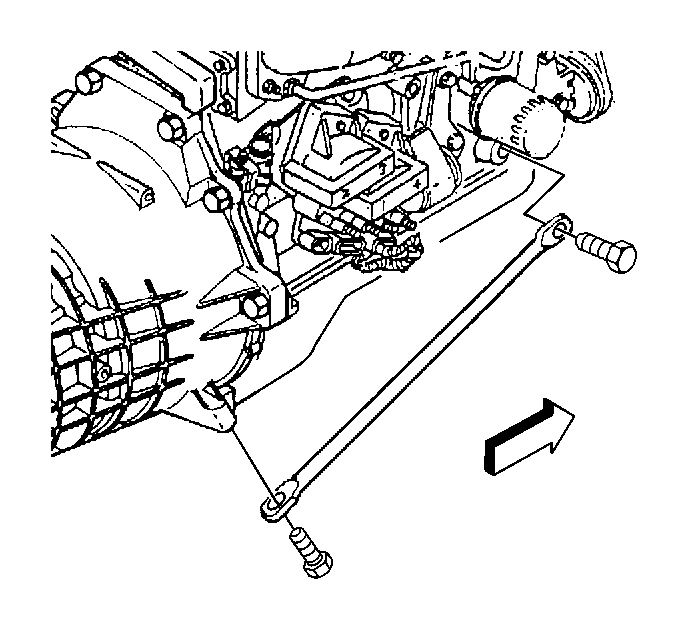
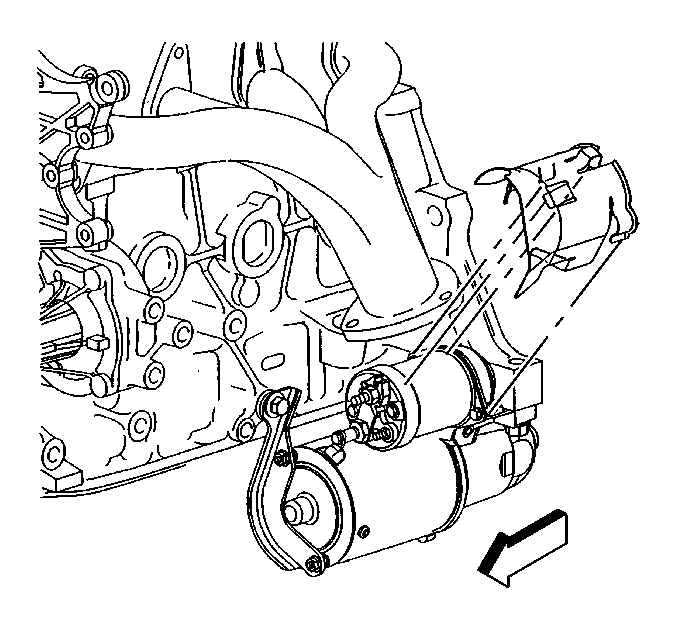
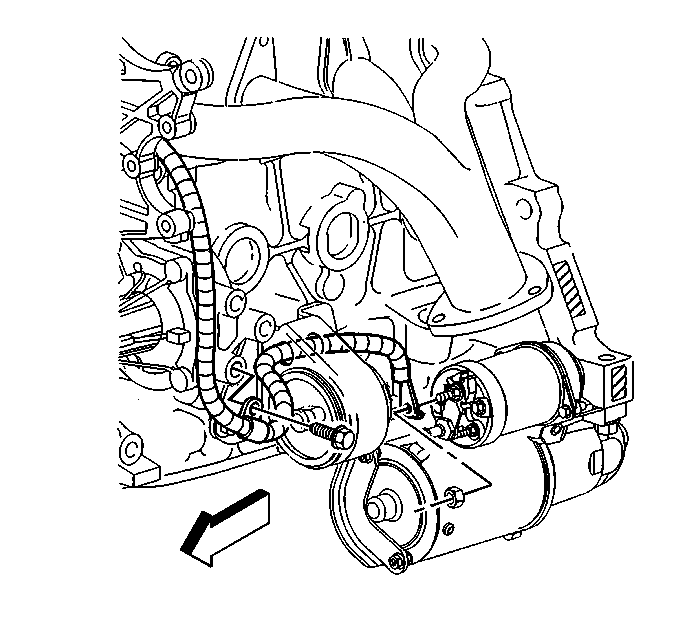
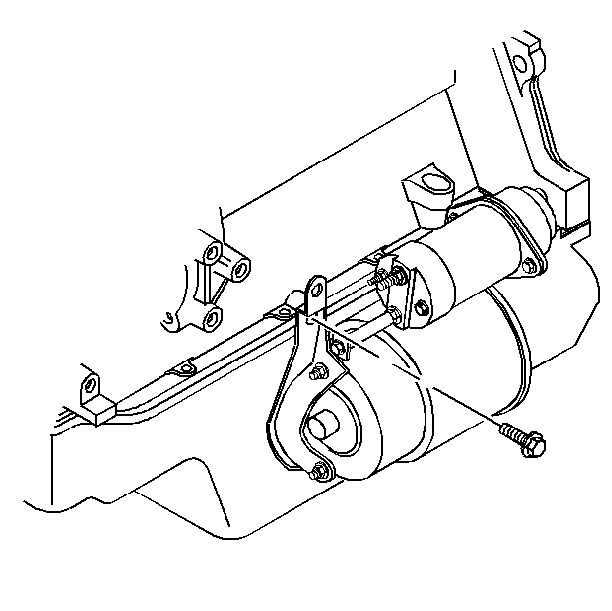
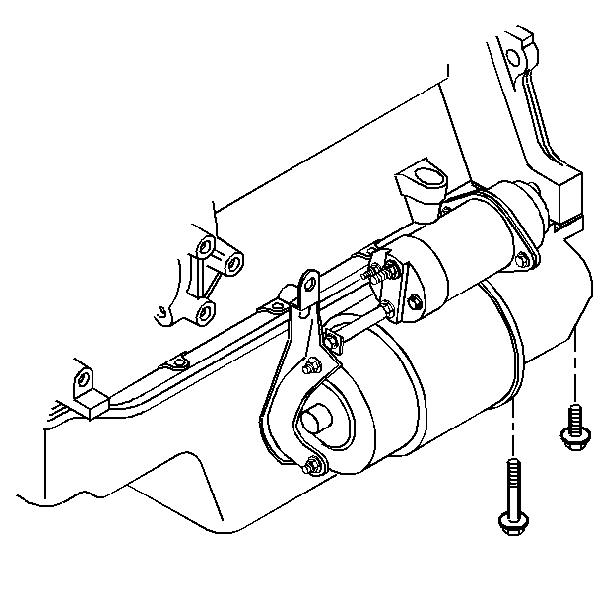
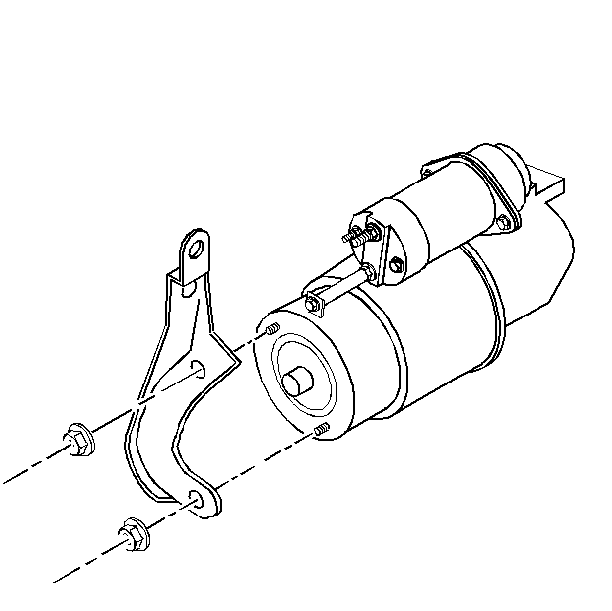
Installation Procedure
- Install the brush end bracket to the starter motor.
- Install the brush end bracket attaching nuts to the starter motor.
- Install the starter motor to the vehicle.
- Install the inboard starter mounting bolt. Do not tighten.
- Install the brush end bracket mounting bolt to the engine. Do not tighten the bolt.
- Install the outboard starter mounting bolt.
- Connect the wires to the starter solenoid.
- Install the starter heat shield.
- Install the engine to transmission brace rod.
- Install the engine to transmission brace rod mounting bolts.
- Install the exhaust manifold pipe. Refer to Exhaust Manifold Pipe Replacement in Engine Exhaust.
- Connect the negative battery cable.

Notice: Use the correct fastener in the correct location. Replacement fasteners must be the correct part number for that application. Fasteners requiring replacement or fasteners requiring the use of thread locking compound or sealant are identified in the service procedure. Do not use paints, lubricants, or corrosion inhibitors on fasteners or fastener joint surfaces unless specified. These coatings affect fastener torque and joint clamping force and may damage the fastener. Use the correct tightening sequence and specifications when installing fasteners in order to avoid damage to parts and systems.
Tighten
Tighten the brush end bracket nuts to 11 N·m (97 lb in).


Tighten
Tighten the starter motor and the brush end bracket attaching bolts
to 43 N·m (32 lb ft).

Tighten
| • | Tighten the battery positive cable to starter nut to 9 N·m (80 lb in). |
| • | Tighten the engine wiring harness to starter nut to 1.9 N·m (17 lb in). |


Tighten
Tighten the engine to transmission brace mounting bolts to 50 N·m
(37 lb ft).
Starter Replacement 4.3L
Removal Procedure
Caution: Before servicing any electrical component, the ignition and start switch must be in the OFF or LOCK position and all electrical loads must be OFF, unless instructed otherwise in these procedures. If a tool or equipment could easily come in contact with a live exposed electrical terminal, also disconnect the negative battery cable. Failure to follow these precautions may cause personal injury and/or damage to the vehicle or its components.
- Disconnect the battery negative cable.
- Raise and suitably support the vehicle. Refer to Lifting and Jacking the Vehicle in General Information.
- Remove the front tire and wheel assembly from the right side of the vehicle. Refer to Tire and Wheel Removal and Installation in Tires and Wheels.
- Remove the differential carrier shield mounting bolts, if equipped.
- Remove the differential carrier shield, if equipped.
- Remove the wires from the solenoid.
- Remove the starter mounting bolts by accessing them below the right wheel house panel.
- Remove the starter from the vehicle.

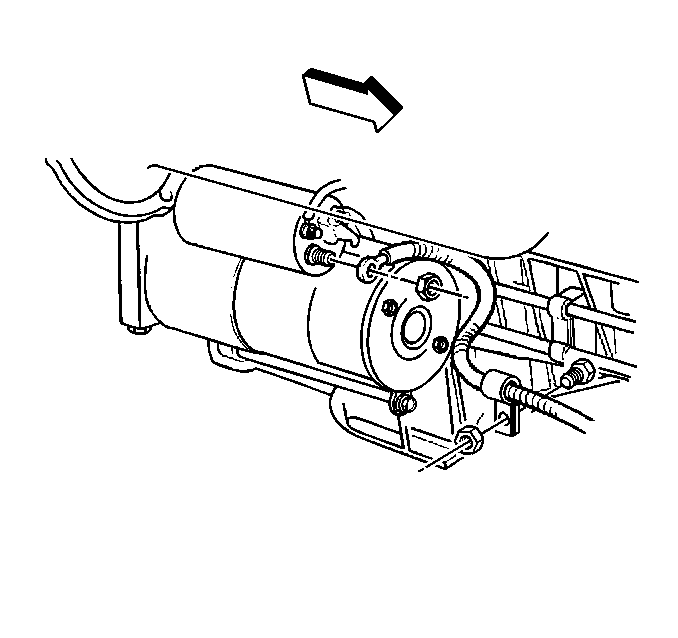
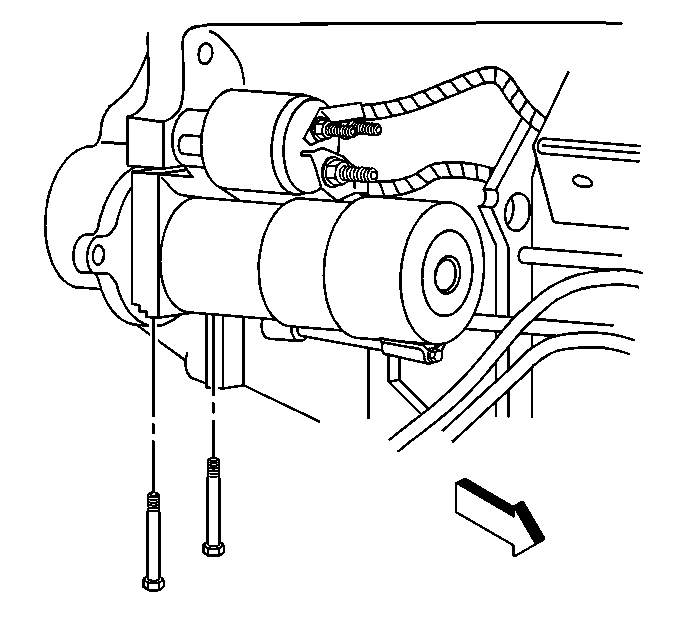

Note the location of the shims, if equipped.
Installation Procedure
- Install the starter and the inboard starter mounting bolt. Do not tighten.
- Install the starter shims, if equipped.
- Install the outboard starter mounting bolt.
- Connect the wires to the solenoid.
- Install the differential carrier shield, if equipped.
- Install the differential carrier shield mounting bolts, if equipped.
- Install the tire and wheel assembly. Refer to Tire and Wheel Removal and Installation in Tires and Wheels.
- Lower the vehicle.
- Connect the negative battery cable.


Notice: Use the correct fastener in the correct location. Replacement fasteners must be the correct part number for that application. Fasteners requiring replacement or fasteners requiring the use of thread locking compound or sealant are identified in the service procedure. Do not use paints, lubricants, or corrosion inhibitors on fasteners or fastener joint surfaces unless specified. These coatings affect fastener torque and joint clamping force and may damage the fastener. Use the correct tightening sequence and specifications when installing fasteners in order to avoid damage to parts and systems.
Tighten
Tighten the starter mounting bolts to 50 N·m (37 lb ft).

Tighten
| • | Tighten the battery positive cable nut to 9 N·m (80 lb in). |
| • | Tighten the engine wiring harness to starter nut to 1.9 N·m (17 lb in). |

Tighten
Tighten the differential carrier bolts to 25 N·m (18 lb ft).
